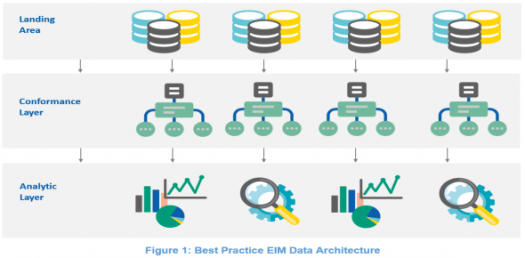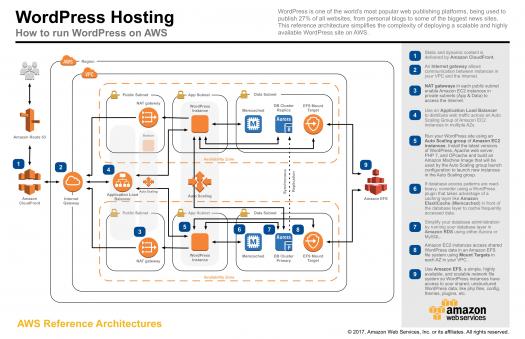Data Architecture Quiz

As data are raw facts, the collection, storage, processing is important to it. Data architecture is a composed model which controls how the data are handled. This model helps the data to serve as the architecture domain that builds the pillar of enterprise architecture. Do you know about data architecture? Try this one!
- 1.
Which of these places is data architecture not required?
- A.
Library
- B.
School
- C.
Company
- D.
Shop
Correct Answer
D. ShopExplanation
Data architecture is not required in a shop because a shop typically does not deal with large amounts of complex data. Unlike a library, school, or company, a shop's primary focus is on selling products rather than managing and analyzing data. While some basic data management may be necessary for inventory purposes, it does not require the same level of data architecture as the other options.Rate this question:
-
- 2.
Which of these is not an architectural process?
- A.
Conceptual
- B.
Logical
- C.
Physical
- D.
Chemical
Correct Answer
D. ChemicalExplanation
The given options are all related to architectural processes except for "Chemical". Conceptual, logical, and physical processes are all integral parts of the architectural design and construction process. However, chemical processes do not typically fall under the scope of architectural work. Chemical processes are more commonly associated with fields such as chemistry, chemical engineering, or industrial processes. Therefore, "Chemical" is not an architectural process.Rate this question:
-
- 3.
Which of these processes represents all business entities?
- A.
Conceptual
- B.
Logical
- C.
Physical
- D.
Mental
Correct Answer
A. ConceptualExplanation
The correct answer is "Conceptual". Conceptual processes represent all business entities because they involve the creation of abstract ideas, concepts, and models that define the structure, behavior, and relationships of these entities. These processes focus on understanding and defining the overall business strategy, goals, and objectives, and they provide a high-level view of the organization's operations and functions. Conceptual processes are essential for effective planning, decision-making, and communication within the business.Rate this question:
-
- 4.
Which of these descriptions is addressed by data architecture?
- A.
Data groups
- B.
Data items
- C.
Data stores
- D.
Data entry
Correct Answer
C. Data storesExplanation
Data architecture does not specifically address data entry. Data architecture focuses on the overall structure, organization, and management of data within an organization. It involves designing and implementing data models, data integration, data storage, and data governance. Data entry, on the other hand, refers to the process of inputting data into a system or database. While data entry is important for the accuracy and completeness of data, it is not the main focus of data architecture.Rate this question:
-
- 5.
Which of these does data architecture do on data?
- A.
Mapping
- B.
Analyzing
- C.
Promoting
- D.
Providing
Correct Answer
A. MappingExplanation
Data architecture involves the process of mapping data, which means creating a structure or framework to organize and categorize data elements. This mapping helps in understanding the relationships between different data elements and how they fit together within a system or database. By mapping data, data architecture allows for efficient data management, retrieval, and analysis. It also helps in identifying data redundancy, inconsistencies, and gaps, which aids in improving data quality and integrity. Therefore, mapping is an essential function of data architecture.Rate this question:
-
- 6.
Which of these is not done to data with the help of data architecture?
- A.
Storage
- B.
Processing
- C.
Utilisation
- D.
Destruction
Correct Answer
D. DestructionExplanation
Data architecture is primarily concerned with the organization, structure, and integration of data within an organization. It focuses on ensuring that data is stored, processed, and utilized effectively to support business objectives. Destruction of data, on the other hand, refers to the intentional deletion or removal of data. While data may be destroyed for various reasons, such as compliance with privacy regulations or data retention policies, it is not a function typically associated with data architecture. Therefore, destruction is not done to data with the help of data architecture.Rate this question:
-
- 7.
Which of these does data architecture not support?
- A.
Data imports
- B.
Data backups
- C.
Transfer of data
- D.
Data entry
Correct Answer
D. Data entryExplanation
Data architecture is a framework that defines how data is organized, stored, and accessed within a system. It focuses on the design and structure of data, ensuring its integrity, security, and efficiency. While data architecture supports data imports, backups, and transfers, it does not directly support data entry. Data entry involves the manual input of data into a system, which is typically handled by users or data entry operators rather than the data architecture itself.Rate this question:
-
- 8.
Which of these is benefitted through data architecture?
- A.
Information technology
- B.
Movement
- C.
Computer system
- D.
Data processing
Correct Answer
A. Information technologyExplanation
Data architecture is a framework that organizes, manages, and integrates data within an organization. It provides a blueprint for how data is stored, accessed, and used. Information technology, which encompasses the use of computers, software, and networks to manage and process data, greatly benefits from data architecture. By implementing an effective data architecture, information technology systems can efficiently store, retrieve, and analyze large volumes of data, leading to improved decision-making, streamlined processes, and enhanced overall performance.Rate this question:
-
- 9.
Which of these type of enterprise is benefitted?
- A.
Mobile products
- B.
Insurance products
- C.
Computers
- D.
Taxing
Correct Answer
B. Insurance productsExplanation
Insurance products are a type of enterprise that can benefit from various factors. Insurance provides financial protection against potential risks and uncertainties. It offers individuals and businesses the opportunity to transfer their risks to an insurance company in exchange for premium payments. This helps in safeguarding against unforeseen events such as accidents, natural disasters, or health issues. Insurance products also provide peace of mind and financial security to policyholders. Therefore, insurance products are beneficial for both individuals and businesses in managing and mitigating potential risks.Rate this question:
-
- 10.
Which of these is mapped through data architecture?
- A.
Files
- B.
Strategies
- C.
Raw facts
- D.
Information
Correct Answer
C. Raw factsExplanation
Data architecture involves the design and organization of data within a system or organization. Raw facts, also known as data, are the foundation of data architecture. They are the unprocessed, unorganized information that is collected and stored. Raw facts are transformed and structured through data architecture to create meaningful information that can be used for analysis and decision-making. Therefore, raw facts are mapped through data architecture.Rate this question:
-
Quiz Review Timeline +
Our quizzes are rigorously reviewed, monitored and continuously updated by our expert board to maintain accuracy, relevance, and timeliness.
-
Current Version
-
Mar 17, 2024Quiz Edited by
ProProfs Editorial Team -
Jan 07, 2019Quiz Created by
Gregorynaomi
 Back to top
Back to top












